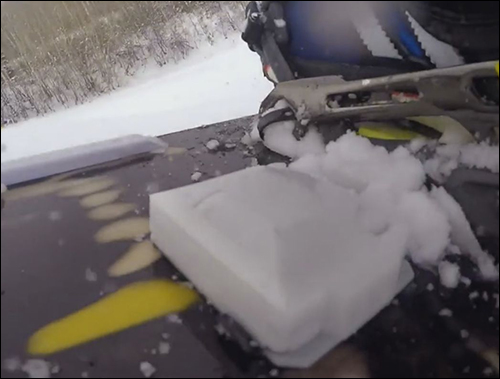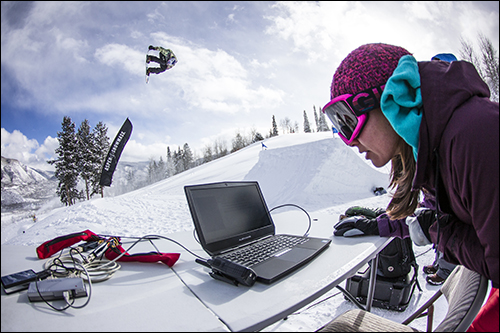Feb 11, 2016During last month's Consumer Electronics Show, Intel announced that its Curie wireless sensor modules, mounted to competitors' snowboards, would be used to track riders' speed, rotation and other statistics in real time during the 21st annual X Games, held in Aspen. Sports fans had the opportunity to see the results a few weeks later, when they watched the games on television.
These devices, about the size of a hockey puck, process the sensor data and serve it up instantly, transmitting it to receivers (which were mounted along the X Games courses) via a Bluetooth connection. Such real-time availability might not be of great value to the snowboarders, since they're too busy hurling themselves off jumps and sighting their landings to read the statistics, but from a spectator's and coach's point of view, the stats serve up great supplementary information. Plus, after the X Games ended, those athletes, along with their coaches, could study the sensor data and watch the corresponding footage intently, as part of their training regimens.
The module contains a six-axis combo sensor with an accelerometer and a gyroscope, as well as a GPS receiver, a barometer and a compass. It is capable of tracking speed, height, distance, airtime, rotations, inversions (flips) and g-force. (Here is the spec sheet.) During the competition, the technology was used only during the final rounds of the men's slopestyle and big-air events.
In both events, only speed, distance, rotation and g-force (of landings) were conveyed to viewers in real time. With the pace of competition and the number of athletes running one after another, that is probably as much data as viewers could easily and quickly read on the screen. Viewers might have liked to have had the chance to witness these stats in the halfpipe competitions, but in that event, riders perform too many tricks, too quickly, to give spectators much of a chance to keep up with the stats in real time.
Purists might say that adding real-time stats to the broadcast attaches too much technology to a sport that is more about personal expression and athleticism. But seeing, for example, that in one of his big-air runs, Mark McMorris hit the lip of the jump at 40 miles per hour, flew 80 feet 4 inches and rotated 1,620 degrees before landing with 13 Gs of impact did not detract from spectators' ability to appreciate the beauty of his switch backside triple cork 1620, for which he won the silver medal. ("Switch" means an athlete starts the jump in his non-dominant or un-natural direction; "backside" means he starts spinning with his back facing downhill—as opposed to his chest, which is front side—and "cork" is an aerial spin with the axis of the competitor's body's leaning to the side, instead of being completely vertical.)
The X Games judges—who evaluate a competitor's performance based on its style, which numbers can't capture, as much as on technical prowess, which the judges are experienced enough to assess visually—were not privy to the sensor data during the events.

This trend toward digital analysis in sports is likely to grow quickly as wireless sensors become more powerful, small and cheap. Baseball fans have seen Major League Baseball's ability to quantify every twist of the ball through sophisticated video-capture capabilities inside ballparks. And sports fans have likely enjoyed similar on-screen notations in football and other pro sports (see RFID Drafted to Track NFL Players' Every Move During Games and Best New Product: Zebra's Next-Gen Technology Powers Next-Gen Stats). Intel and the X Games indicate they will likely expand their partnership and add the sensor technology to more events and disciplines at the 2017 winter X Games.
But that begs the question: How much will the technology bleed into sports equipment? When an Aspen Daily News reporter asked Steven Holmes, Intel's VP, whether the tech firm could embed a smaller version of the sensor module into a baseball, Holmes replied, "Anything is possible." But when pressed about whether Intel is working toward that very thing, he would not comment.


